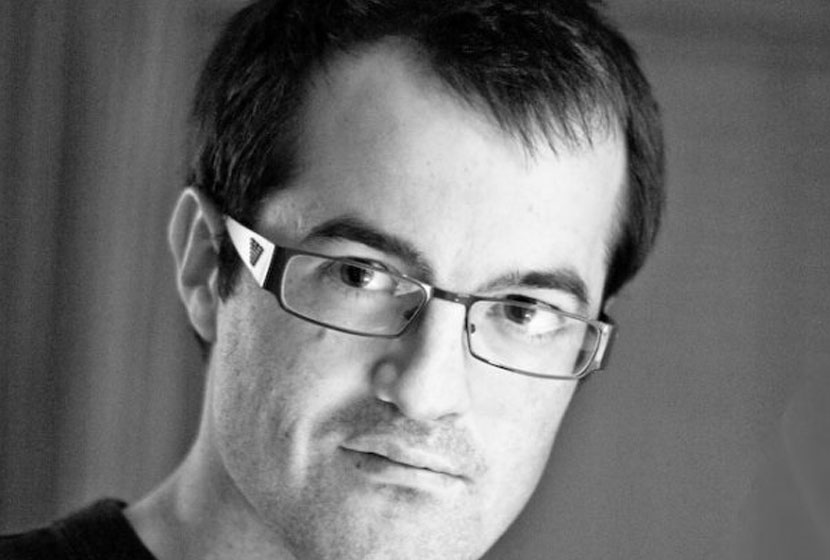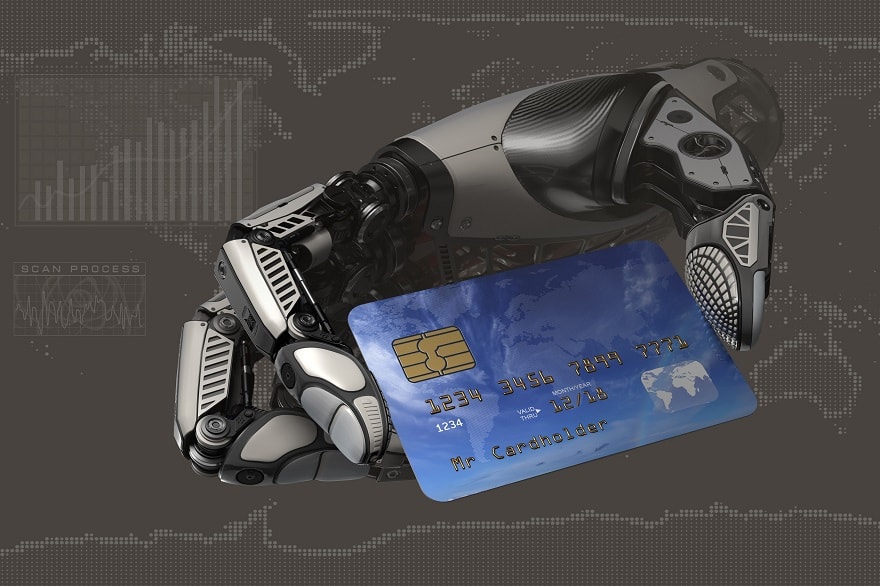Or the revolution in digital performance through Big Data.
Companies and their brand heritage follow developments governed by Darwinian theories. Influenced by their environment and subject to fierce competition, brands are born and die every day to the rhythm of natural selection, subject to the balance of supply and demand.
Companies are moving to adapt to revolutions, respecting cycles. Financial crises, environmental issues, sustainable development, responsible business, the Internet, and even mobile and social networks are just some of the concepts that, with each decade, have encouraged companies to reinvent themselves and reposition their brands.
The 2000s saw the advent of the Internet era, which has changed many sectors as never before. Just like advertising in its time, the players in corporate strategy had to integrate these new parameters to reprogram the genetic heritage of brands. The age of the Internet has seen the rise of consumer power over marketers. More expert, connected, networked, the Internet user who has become a conso'actor influences offers, prices and all the values that make up the genome of brands. Some companies have given in to the dictates of customization and crowd sourcing to satisfy these new consumer behaviors where exclusivity and the persona market are taking precedence over the mass market. Left to these new predators, marketers have been dispossessed of the power granted to them by the "segmented" era of communication.
The cards have been reshuffled and many businesses such as retail have been reconfigured. Far from stabilising, environmental factors are becoming more and more numerous, and mobile uses are the new influencers, adding real time and spatial location to the power of Internet users.
Cycles of change are getting shorter, and each year brings its share of unpredictable factors to which companies are forced to adapt, such as social networks and connected objects, fertilizing the breeding ground for the Big Data phenomenon. Uses are being created faster than markets are able to integrate them and companies have no choice but to be agile in order to survive.
Data: the super power of the marketer!
 As many theorists agree, the mathematical modelling of the market is far from hypothetical. Finance has taken the plunge in recent years. In a mode of data profusion, companies are seeing the birth of new professions called data scientists: capable of decoding the structures of data to understand markets, customers and their dynamics.
As many theorists agree, the mathematical modelling of the market is far from hypothetical. Finance has taken the plunge in recent years. In a mode of data profusion, companies are seeing the birth of new professions called data scientists: capable of decoding the structures of data to understand markets, customers and their dynamics.
The interaction between the market and consumers generates more data every day. The globalization of the company and the digitalization of its points of contact with the consumer allow a gigantic equation to be formed. If mathematics is very present in nature, it is also present on the market and the modeling of complex systems, the learning machine and the abundance of data allow today to rise to the rank of the tools for the creation of essential values. Traditional marketing models are outdated, as are the levers of action for companies in their market.
Marketing effectiveness, as we know it, comes from over 40 years of know-how! Made of deductions based on studies and intuitions based on presupposed knowledge of behaviours, these marketing theories lead to a segmentation of the target that is conducive to a rather crude personalization of the relationship with the brand. Yesterday seduced by the message or values of a brand, tomorrow consumer behaviour will induce prediction.
More effectively accompanying the satisfaction of consumer needs, predictive models are creating a new "breed" of brands and offers. The new marketers surround themselves with "data scientists" in order to give meaning to the data produced by their ecosystem composed of tablets, mobiles, websites, points of sale, loyalty programs, social networks, etc. Through the data it generates, each new interaction with the consumer reveals a facet of his behaviour, a part of his equation.
Once the behaviour has been modelled, it becomes possible to define the factors whose conditions trigger a desired event. This model evolves over time to be able to identify new business opportunities every day. This balance between anticipated, "predicted" demand and supply is conducive to current consumer trends. The company, which knows how to produce the most accurate demand, throws nothing away and precisely satisfies the consumer's need with a tailor-made offer. The new industries of unit manufacturing or small batch production have a bright future ahead of them. The anticipated success of 3D printers or new press models with "personal" newspaper publishing are paving the way for the practices that markets must integrate.
The fact: the new black gold
 In order to implement these predictive devices and model consumer behaviour, it is first necessary to develop the capacity to acquire and reconcile several data sources.
In order to implement these predictive devices and model consumer behaviour, it is first necessary to develop the capacity to acquire and reconcile several data sources.
The first are the so-called "public" data: the data generated by the activity of Internet users and called 'logs', data from social networks, mobile applications, advertising platforms, Open Data etc., all the traces from the various points of contact with the consumer. The particularity of these data lies in their so-called "multi-structured" formats and the frequency of their calculation, in real time for some, weekly or monthly for others.
This "public" data can be reconciled with the company's "private" data, such as data from CRM tools. This internal data adds a new dimension to the model and offers a more precise vision of the customer, a better knowledge of behaviours and opens the way to the definition of a finer segmentation, a more precise sales policy, and ultimately a more efficient company.
Reconciling these different layers of data brings to light behaviours, materialized by "events". Further analysis isolates their "frequency", their probability of recurrence and the triggering factors called "insights". This is done through the application of mathematical models. It is crucial to stress the importance of this first approach, which lays the foundation for all modelling. Very methodical, the reconciliation of these data must be done step by step by planning the addition of sources so as not to disturb the first teachings by the noise generated by the influx of information. This first phase enables events to be identified and correlated. Once they have been expressed to the marketing department, they take on a business meaning.
The purpose of this device is not so much to find out why a consumer has bought, but rather "how" he or she was made to buy and what factors triggered the act of purchase. This new vision of marketing, possible only through a data-based approach, relegates standard models to the prehistoric era. This marketing revolution gives a new dimension to the understanding of buying behaviour, a level inaccessible to the human brain, which can only process a few dozen factors, but which is the playground of computers compiling billions of data to shed light on behaviour.
Many analysts see these new concepts as a technological, philosophical and scientific revolution. These models allow human beings to reach a new level of understanding of their environment and themselves. A parable frequently proposed is that of adding several rapidly viewed images to form a film. These models help the human being to understand things that are unintelligible. Human beings have always dreamed of predicting the future, it is no longer science fiction today.
Big Data at the service of a new consumer science
Big Data projects and the thinking behind them are pushing systems to interconnect in order to organize the collection of information. Big Data is changing organizations, decisions and achievements. It must be understood that until now, database administrators have modelled tables to structure the storage and querying of data for business needs. Developers have imagined applications to manipulate data based on business processes expressed by project owners such as customer relations.
These models are outdated, impossible to maintain in the face of new market challenges such as cross-channel. The granularity of the information obtained through web analytics or social networks is too fine! The problem is the same for marketing assumptions such as segmentation or CSP targeting. These models are outdated because they have been rendered obsolete by the linking of data systems that express "unpredictable" relationships and "unintelligible" data behaviour.
The revolution lies in the reversal of a fundamental trend, we no longer ask the data to demonstrate a hypothesis, an intuition, we observe from the data the facts and thus build much more efficient tools. Data creates and drives usage.
The revolution has become possible thanks to technological developments, in particular the storage and processing of very large volumes of data. In the medical community it is common to say that only 5% of the data collected is used to make decisions. Imagine applications that can take into account the remaining 95%! Beyond storage, IT developments have made it possible to process large volumes of calculations and business processes in parallel in order to interpret the data obtained.
The revolution lies in Big Data's ability to empower the business by making it more agile, more intelligent, and at a controlled cost. Big Data is to marketing what the agile method is to IT. We must not tackle large projects costing several hundred thousand euros or - for some companies - several million euros that end up paralysing usage because the specifications are too ambitious.
Big Data is approached through the realization of prototypes also called "Proof of Value" (POV); an agile "test and learn" way of thinking. This requires accepting to make mistakes, not to persist on certain disappointing models in order to concentrate its resources on the most efficient ones. Many customers express the interest of this approach, particularly the level of serendipity it reveals. The interpretation of the data reveals unsuspected uses.
Agility and plasticity best qualify Big Data architectures. The general principles are to recover heterogeneous data via flows, to consolidate the data, to check the integrity by correcting imperfections or accidents. A mathematical synthesis phase is then applied to the data to map the data in order to create comparisons and highlight events. Probabilities are used to define the level of opportunity of each event in order to rule out noise.
The technology must be transparent in this type of project. A TOP should not exceed a few weeks and the IT, or mathematical, complexity is up to the provider, only the "business scenarios" count.
A better understanding of the consumer
The main uses of Big Data in digital marketing are the hyper-personalisation of customer journeys or the optimisation of churn by detecting and addressing risky behaviour. The most consuming sectors are telecommunications, banking and retail. Big Data is at the service of understanding rich customer experiences and new cross-channel behaviours such as Web to Store. Big Data makes it possible, for example, to address the challenges facing retailers in drive to store strategies.
Traders are seeing a decline in the average basket or longer restocking cycles. Applications are available to offer highly targeted promotions that are valid over a short period of time to trigger the act of purchase or highly targeted upselling when products are picked up in stores. These tools can also be used to calculate the medium- and long-term impact of promotions on loyalty or the offer, the impact of floating sales on profitability, etc.
Many business cases are published on the Internet as the PriceMinister case or the Big Data played an important role in defining their emailing strategy. They had on the one hand destocking offers from the marketplace (high frequency over short periods) and their marketing database on the other hand with traditional segmentation. They were convinced that segmentation - or pre-testing sampling - was a source of error and decreased the efficiency of emailing operations and a high churn rate. With a Big Data approach they were able to refine their knowledge of the database and extract finer targets for each campaign. They discovered that grandmothers liked to play Pokémon and that grandfathers didn't just give Pokemons to their grandchildren! This approach increased the effectiveness of the campaigns tenfold (more affinity targets) and reduced churn.
For example, from another approach, the company Allociné had a problem that most online media face today, a need to enhance the value of advertising space and the audience marketed by the data versus the page viewed. As an illustration, 25% of Allociné's audience is generated on their mobile applications for less than 5% of the turnover.
Thanks to a Big Data approach, with several hundreds of millions of interactions analysed per day through a cross-media approach, they can now address users with qualified interests and not just page views. Thanks to these new approaches, Allociné markets offers to film distributors that allow them to judge the commercial opportunity of a film by country, region, department or city from the day of its release and thus manage the number of copies to be supplied.
By Thierry PICARD, Deputy Managing Director - Spikly Digital Agency - Keyrus Group
By Christophe SEVERS, Group Vice President Strategy Solutions & Services - Keyrus
About the authors
Thierry Picard is Deputy Managing Director of Spikly, the digital agency of the Keyrus Group. With fifteen years of experience in Internet project management, he has made a name for himself in the luxury goods and press sector by taking over the management of international e-commerce for the Hermès Group and the management of Internet activities for the New Republic.
Christophe SeversMr. K. K., Vice President in charge of Solutions and Services Strategy of the Keyrus Group, has more than 15 years of experience in the field of data valuation. He started his career in the Actuarial Studies Department of Fortis (Belgium), and then accompanied and advised many companies in the definition and implementation of their decision-making and analytical strategy. Combining a strong affinity for quantitative approaches and an anchoring in the economic reality of companies, he is also in charge of the deployment of the new Big Data Analytics offers of the Keyrus Group. Christophe Severs has a degree in Physical Sciences from the Université Libre de Bruxelles and also holds an Executive Master in Management from the Solvay Brussels School of Economics and Management.
About the Keyrus Group
A major player in consulting and integration of Business Intelligence and e-Business solutions for large accounts and ERP/CRM solutions for the Mid Market, the Keyrus Group currently employs nearly 1,800 people on four continents and supports its clients in optimizing their performance and data control by offering them a complete range of services capitalizing on the skills set up in the following areas:
Management Consulting
Business Intelligence - Performance Management
Digital Business - Big Data & Analytics
Enterprise Management Solutions (ERP/CRM)
The Keyrus Group is listed on the Eurolist of Euronext Paris (Compartment C/Small caps - ISIN Code: FR0004029411 Reuters: KEYR.LN - Bloomberg: KEYP FP).
More information : http://www.keyrus.fr/












